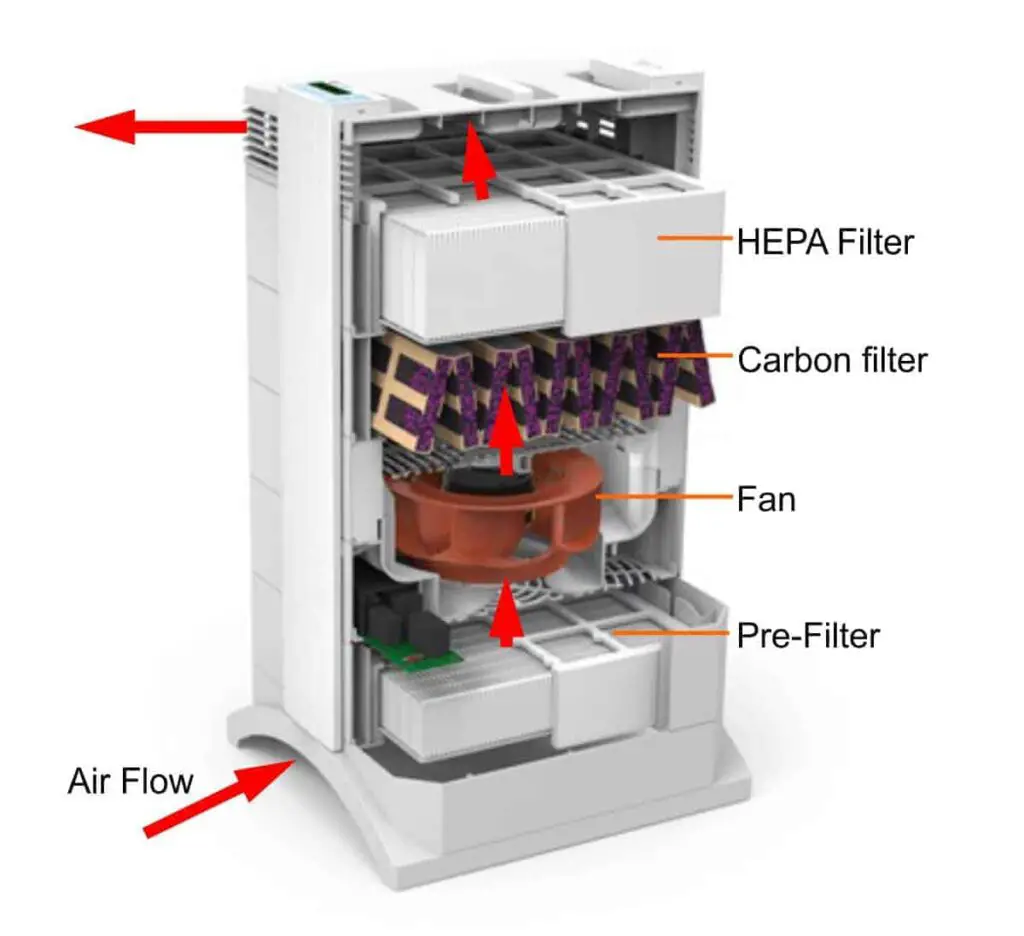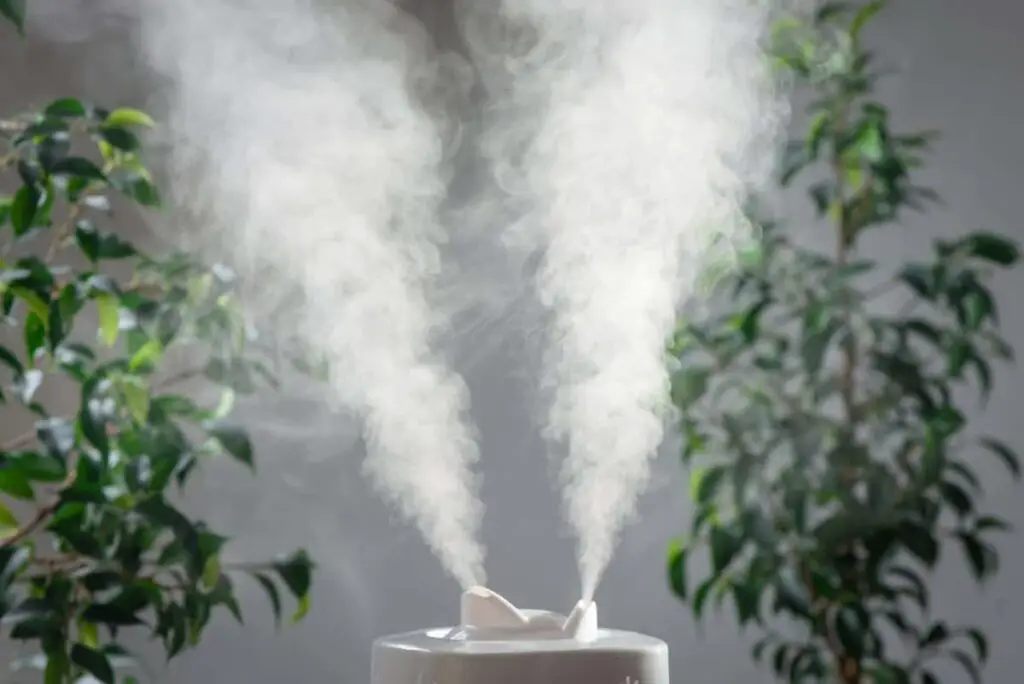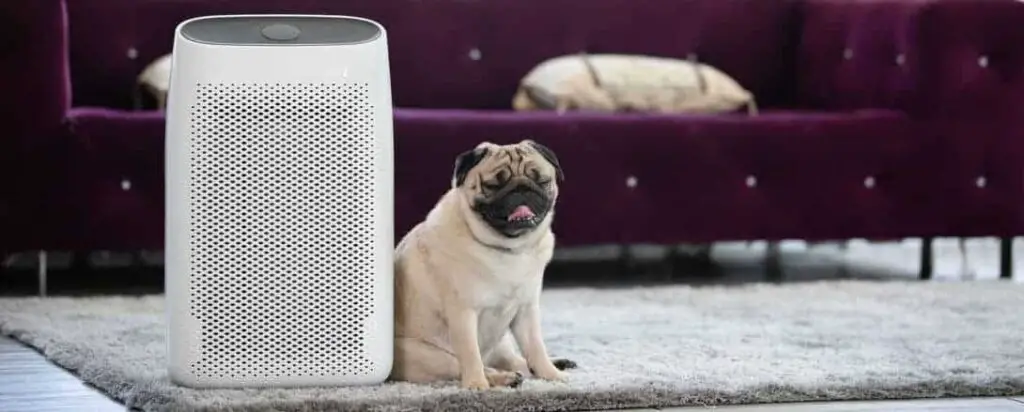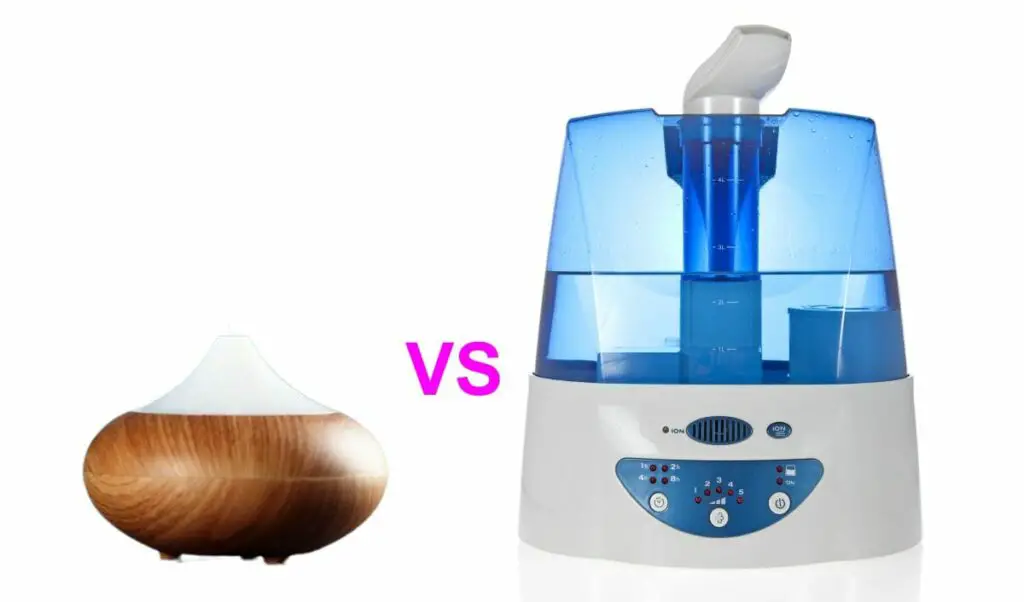Both air purifiers and humidifiers can have quite a big effect in your home, but they each do so in different ways. If you’re looking for ways to help allergies or respiratory symptoms, or if you want to create an environment that’s healthy for babies (or pets), understanding the differences between these two devices is important. I’ll explain how air purifiers and humidifiers work-and how you can use them to best effect.
An air purifier is an appliance that removes particulate and chemical pollution from the air. A humidifier adds water vapor into the atmosphere to increase the humidity level. Air purifiers can be useful all year to everyone. Humidifiers are usually used during the winter months by people with particular health conditions.
You may need both types of machines depending on where you live and your own characteristics. But let’s explore the difference between an air purifier and a humidifier to help you decide if you need to buy both.
Air Purifiers and Humidifiers Work in Different Ways
An air purifier is a device that removes or otherwise “inactivates” airborne contaminants from the air. Two basic components of an air purifier are a fan and filter. Filtration technology can vary depending on what type of air purifier you purchase and how it works. Most air purifiers have 2 types of filter to remove airborne pollutants. A HEPA filter to remove airborne particles and an activated carbon filter to remove chemicals. Air purifiers, sometimes called air cleaners, do not add any moisture to your home’s atmosphere.
By removing harmful particles such as dust mite, pet dander, allergen, mold spores and pollution particles, they help maintain cleaner air conditions. This helps allergy sufferers and those with asthma. However, air purifiers may also benefit a wide range of other people and children as outlined below.
A humidifier, on the other hand, does not clean the air. It simply adds water to the atmosphere by boiling water into steam (via a heating element), vibrating droplets of distilled or tap-water mist with ultrasonic technology (to disperse them more effectively), or evaporating it using a fan and wick.
Note that ultrasonic models might also introduce tiny mineral particles into the air if you use tap instead of distilled water – though their effects are still unclear at this point in time. In an experiment the mineral particles were found in lungs and gene expression in some cells altered but there was no significant inflammation. There is a case report of severe damage to a child’s lungs from the use of an ultrasonic humidifier without using distilled water.

Air Purifiers and Humidifiers Help People With Different Conditions
The second difference between an air purifier and a humidifier is the ways in which they can help with health/comfort problems. A humidifier in adding water vapor into the air prevents anybody’s surfaces in contact with the air from drying out. This includes our skin and our airways. It will also include our eyes but as we have glands which provide a film of fluid over our eyes, we usually do not notice this.
So if the air has a relative humidity less than 30% a humidifier helps with-
- Dry skin
- Nose bleeds-these occur with increasing frequency if the mucosa in the nasal passage dries out
- Dry cough
- Ease of breathing
An air purifier’s primary function is to remove particles from the air. These have been implicated in many diseases, as I have outlined in this article, some of the health effects may surprise you. Particles seem to have an effect even within ranges that are currently considered safe by the EPA. We also know that ultrafine particles when breathed into the lungs can directly enter the bloodstream and even be found in the brain at postmortem. It is not surprising therefore that particulate pollution has been associated with many serious illnesses.
An air purifier can reduce the particle count, which is been associated with –
- Asthma and Chronic Obstruction Pulmonary Disease-exacerbated
- Pneumonia-increased sickness and premature death from pneumonia
- Development of chronic bronchitis
- Premature aging of the lungs
- Heart attacks-increased
- Strokes
- Cancer
- Dementia and Parkinsons Disease
- Increased mortality
- Exposure during pregnancy is related to neurological disorders, mainly of the brain, in children
- Children have more asthma and respiratory symptoms
- Age-related decline in health is increased by air pollution
- Aging – does air pollution practically ultrafine particles speed up aging?
As you can see from this list of conditions, air purifiers arguably would benefit many if not most people. Especially as there is evidence that of the population has some underlying coronary artery disease by the age of 50. You may not realize this, but your home’s air contains approximately 2 million ultrafine particles per cubic liter!
Now I know that this is difficult to believe-so here is a video of a TSI P-Trak ultrafine particle counter (for some reason it would not embed). If you cut to 1 min 41 seconds, you will see a reading of 2230 particles per ml. This equates to 2.34 million ultrafine particles per liter in room air.
We also know that ultrafine particles have been found in human brains and may speed up aging.
Whilst these are all factual statements, there are no controlled clinical trials showing whether these particles speed aging. To investigate definitively two matched groups of people would need to be compared. One group would live with air purifiers and the control group would live without them. Ideally this would be for 30 years and health outcomes measured to see if any aspects of health were improved by breathing particle free air. So we do not know for sure.
Even if such trial can be done a lot of us, I am afraid would no longer be here by the time the results were known – I am including myself. It would also be an extremely difficult trial to do. In the clinical trials of air purifiers people struggle to reduce particle count may even 50%. This is in people you have an illness that may be helped by an air purifier and therefore highly motivated. The EPA optimistically targets 80%. One of the problems is that the particles cannot be seen or sensed by people they can only be measured with particle counters.
So buyers of air purifiers sometimes write enthusiastic reviews and blog posts online that an air purifier is wonderful without measuring the particle count before and after switching it on. So unfortunately despite the good review, it may be completely ineffective for the room they have it in and the way that they are using it. Some people also comment on how nice and quiet an air purifier is when it switched to a low setting, and often do this in the bedroom at night.
It is a bit like turning off a car engine and commenting on how nice and quiet the car is-it may be quiet but it is not very effective with the engine off!

A Humidifier Needs Much More Maintenance Than An Air Purifier
An air humidifier needs daily water changes and a wipe down. Depending on the type, it needs a thorough cleaning either once or twice a week. Those that use cool water, a cool mist humidifier, evaporative humidifier or an “air washer” humidifier, can allow bacteria or fungi to grow in the water. These micro-organisms can then be sent into the air and make those with asthma or allergic rhinitis (allergy in the nasal passages) worse. So these humidifiers need cleaning twice a week.
One study looked at what happened using tap water to run a humidifier for 10 hours per day for 12 days without cleaning. Bacteria in the air reached a peak by day 9 and fungi by day 12. Relative humidity when the humidifier was on averaged 85% and by the time the experiment was over there was fungus growing on the walls!
A warm mist humidifier heats the water to such an extent that bacteria and fungi cannot grow in it and so although like all humidifiers they need emptying and drying once a day they only need cleaning once a week.
An air purifier in general needs a filter change once a year. Some can go 18 months without needing a filter change.
Some Humidifiers Need More Electricity Than an Air Purifier
Most air purifiers will need 72 to a150 W to be effective. An ultrasonic humidifier uses 30W a cool-mist humidifier 50 W and a steam humidifier 230W. A whole house humidifier will use 240 watts approximately. So there is a larger range of energy needs for a humidifier. Please see this article for information on the different types.
Running Costs Are Lower For a Humidifier
For ultrasonic or impeller humidifiers, the EPA recommend using distilled water. This is not necessary for steam humidifiers and the EPA has not tested and evaporated humidifiers, but it seems unlikely theoretically that distilled water would be needed. So for at least 2 of the types of humidifier distilled water is necessary and will cause an ongoing cost. Distilled water costs about $0.80 per gallon and the humidifier will use. This is lessened by the fact that the humidifier is usually only needed over the winter months.
Air purifiers need filter replacements in the filters are fairly expensive. In general, one will need $100-150 worth of filter changes per year.
The Aims of Monitoring Are Different
For an air purifier the aim of monitoring is to see whether it has been effective enough at removing pollutant/particles, the EPA suggests aiming for a reduction in particle count of at least 80%. For humidifiers the aim of monitoring is to check if the humidifier is being too effective and has caused excess moisture to the air. If the air is too moist then house dust mite can multiply with the humidity over 50% and fungi with the humidity over 80%.
As there are health implications, both should be used with monitoring. In the case of an air purifier this is an air quality monitor and in the case of a humidifier a hygrometer.

Summary-difference between an air purifier and a humidifier?
Because of the difference between an air purifier and a humidifier, it is not really a question of one or the other, at times you will need to run both. Indeed, there are appliances that combine both an air purifier and a humidifier-an “air purifier humidifier combo”. Also a humidifier is usually only needed to increase the moisture level during the winter.
So keeping your indoor air quality optimal, you will probably need both air purification to remove airborne pollutants as well as humidification to add water vapour.
Related Questions
Related Articles
Whole House Humidifier-7 Reasons It Is So Much Better Than Several Portable Units

Different Types of Humidifiers-Only 1 Type Will be Perfect For You

Do Humidifiers Help With Asthma?


References
Residential Air Cleaners – A Technical Summary – US EPA
Use and Care of Home Humidifiers-US EPA
Effect of aerosol particles generated by ultrasonic humidifiers on the lung in mouse Umezawa et al., 2013
Outbreak of Bioaerosols with Continuous Use of Humidifier in Apartment Room Ji Hyun Lee, Kang Ho Ahn, and Il Je Yu

